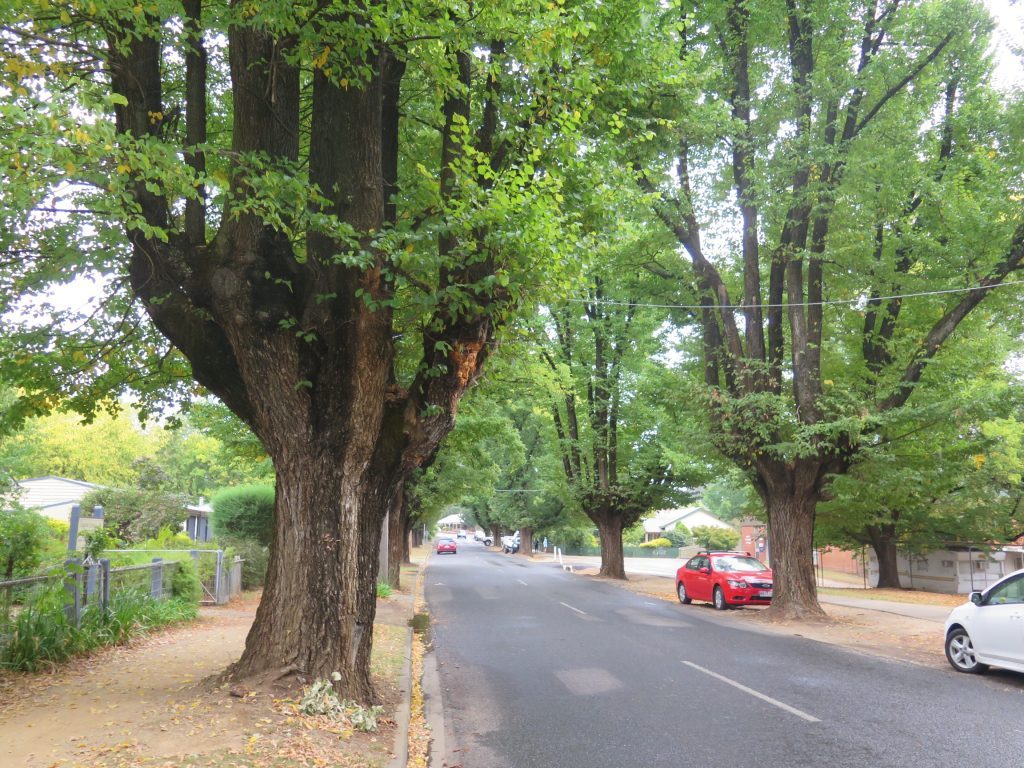Aerial view of part of the wall of Wilpena Pound
CLICK ON IMAGES TO ENLARGE
27 October 2017
Breakfast was early this morning, and we had to be ready at 8.40am to be collected for our trip to the airport and our flight over Wilpena Pound, something we had been looking forward to. Our pilot, Jason, collected us on time and it was only a short trip to the airport. For this flight we had four passengers, all from our group. We had a glimpse of a mob of emus that were close to where the bus stopped.
The flight was a little bumpy as we ascended but it was a glorious sunny morning, and perfect for viewing the area around Wilpena Pound. These ancient lands have been there for millions of years, and it is quite awesome to see them from above.
 Some information about the area – Wilpena Pound is a large rock basin in the Flinders Ranges National Park. St. Mary’s Peak (1170 m.) is the highest peak in the Pound walls. Rawnsley Bluff is another prominent landmark.
Some information about the area – Wilpena Pound is a large rock basin in the Flinders Ranges National Park. St. Mary’s Peak (1170 m.) is the highest peak in the Pound walls. Rawnsley Bluff is another prominent landmark.
There is an historic homestead ruin in the pound; visitors can walk around the Pound floor or take one of the walking trails which provide treks of varying difficulty. Outside the Pound is an additional trail which climbs Mount Ohlssen Bagge, which is behind Wilpena Chalet. Other places of interest in the area are Sacred Canyon and Stokes Hill Lookout.
 History:
History:
Aboriginal people have been in the area for at least 15,000 years, the date of ash excavated from cooking fires at Arkaroo Rock. Eight cultural groups of Aboriginal people have associations with the Flinders Ranges. The Adnyamathanha and Walypi lived exclusively in the hills. Others lived mainly on the plains. They spoke different dialects, but met for ceremonial purposes, intermarried and traded. They lived on a variety of plants gathered by the women and hunted animals, using non-returning boomerangs and nets.
Arkaroo Rock is a large rock shelter below the south-eastern rim of Wilpena Pound. Rock paintings and drawings, done in charcoal and ochre, are found in the shelter. The paintings are of reptiles and humans and also abstract designs.
The name Wilpena is from an Aboriginal word meaning bent fingers, which describes the shape of the range. The Aboriginal name for the pound was Ikara, meaning initiation or meeting place. Pound is an English word meaning enclosure. A walk, through a narrow gorge and above Sliding Rock, is the only way to enter the Pound.
Our flight was for 30 minutes, and all too soon our time was up and our pilot Jason (right centre) made a perfect landing, before driving back to the Resort.
After lunch a long walk into Wilpena Pound was available for those who felt fit enough, 3 kms to the end of the walk and 3 kms back. There were also two high steps to lookouts for those super fit! I was keen to start the walk but did not intend to go the full distance, but enjoyed the walk – the heat was a little too much! The trees and rocky cliffs were spectacular, and I met an emu on my walk back!
Tomorrow we leave this spectacular area and make our way back to the town of Quorn, where we will have an opportunity to look around before boarding the old Ghan railway carriages to travel to Port Augusta, where we will spend our last night.









